June 6, 2025 | 14:59 GMT +7
June 6, 2025 | 14:59 GMT +7
Hotline: 0913.378.918
June 6, 2025 | 14:59 GMT +7
Hotline: 0913.378.918
On June 5, the Institute of Human Geography and Sustainable Development (Vietnam Academy of Social Sciences) held a conference titled “Policies and Legislation on Marine Environmental Protection and Biodiversity Conservation.” The event was organized in response to World Environment Day (June 5) and the 2025 National Action Month for the Environment, an initiative launched by the Ministry of Agriculture and Environment.
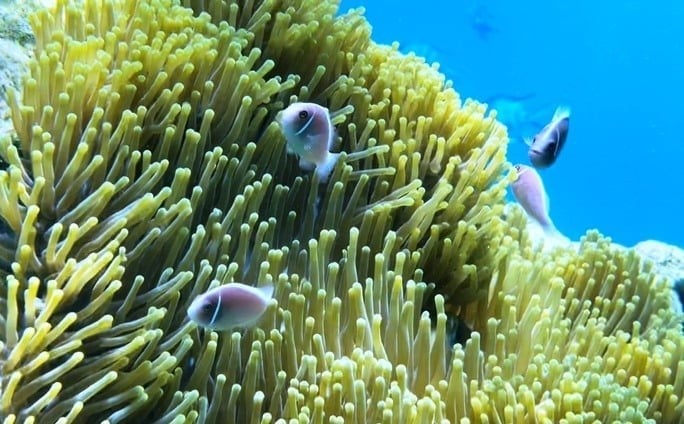
Vietnam is among the world's top 10 marine biodiversity centers, possessing rich ecosystems.
Vietnam possesses a "treasure" of marine biodiversity. According to the International Union for Conservation of Nature (IUCN), the country ranks among the world’s top 10 marine biodiversity centers and is also listed among the top 20 marine areas with the richest aquatic resources globally. Approximately 11,000 species inhabit more than 20 typical ecosystem types across six distinct marine biodiversity zones throughout the country.
According to Dr. Dang Xuan Thanh, Vice President of the Vietnam Academy of Social Sciences, the issue of marine biodiversity conservation plays a critical role in implementing Resolution No. 36-NQ/TW of the 12th Party Central Committee on the “Strategy for the Sustainable Development of Vietnam’s Marine Economy by 2030, with a Vision to 2045.” Reducing plastic pollution and protecting the marine and ocean environment are key solutions to preventing the risk of ecological imbalance and the exceedance of ecosystem thresholds, thereby contributing to the restoration and preservation of marine biodiversity.
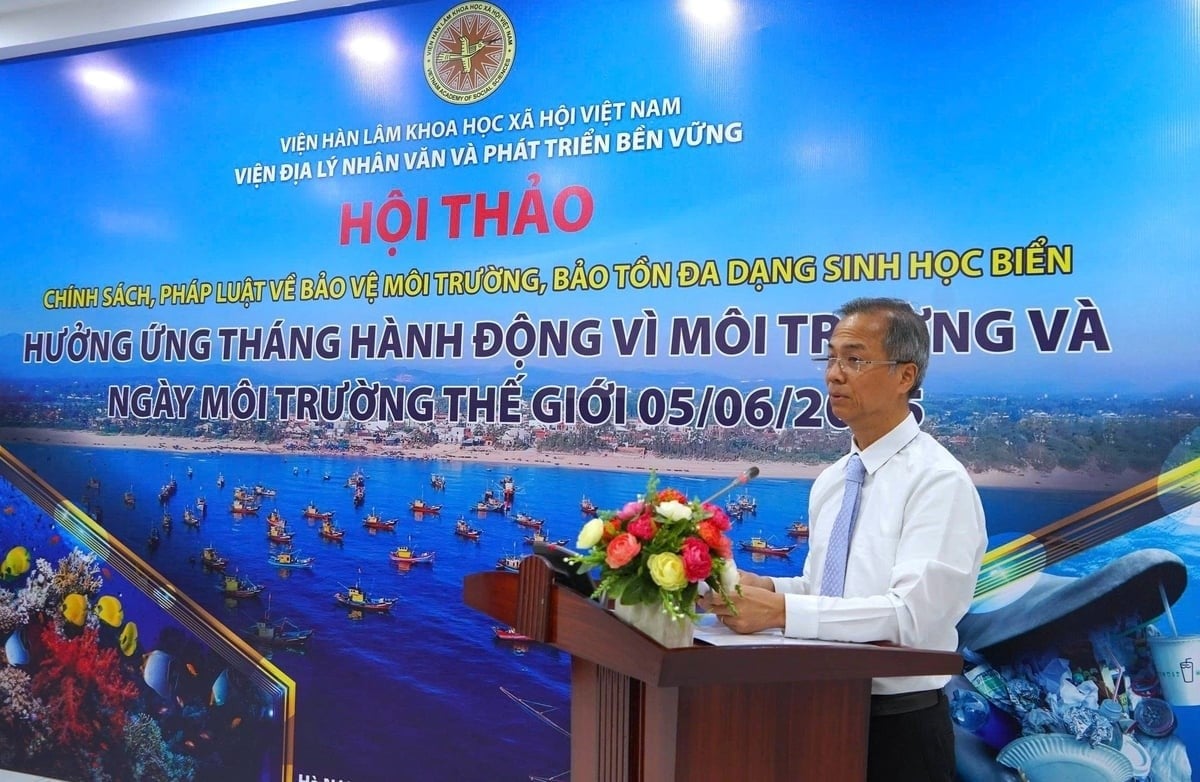
Dr. Dang Xuan Thanh, Vice President of the Vietnam Academy of Social Sciences, emphasized the importance of taking action to protect marine ecosystems. Photo: Trung Nguyen.
According to Dr. Nguyen Song Tung, Director of the Institute of Human Geography and Sustainable Development, marine biodiversity has been under increasing threat in recent years, with many species of flora and fauna in decline, even facing extinction. A report by the Ministry of Natural Resources and Environment (now the Ministry of Agriculture and Environment) showed that over the past 50 years, the area of mangrove forests in the Mekong Delta has decreased by 80%. At the same time, Vietnam’s coral reef systems are in a gloomy state. Coral reef coverage in Vietnamese waters is rapidly dropping. Without active actions, Vietnam's coral reefs could disappear entirely in the near future, along with the risk of extinction for the reef-dwelling species
One of the most effective measures to protect coastal biodiversity is through the establishment and management of marine areas designated as Marine Protected Areas (MPAs). To date, Vietnam has established and put into operation a network of 11 out of 16 MPAs and National Parks with marine conservation components, including Cat Ba, Bach Long Vi, Con Co, Cu Lao Cham, Ly Son, Nha Trang Bay, Nui Chua, Bai Tu Long, Hon Cau, Con Dao, and Phu Quoc.
This system of MPAs not only helps to maintain ecological balance in marine areas, safeguard biodiversity, ensure environmental regulation functions, and provide aquatic resources and seeds but also plays a significant role in the socio-economic development of both local communities and the nation.

Dr. Nguyen Song Tung, Director of the Institute of Human Geography and Sustainable Development, speaks about the threats to Vietnam’s marine ecosystems. Photo: Trung Nguyen.
Dr. Luu The Anh, Director of the Institute of Natural Resources and Environment at Vietnam National University, Hanoi, stated that the greatest challenge to biodiversity conservation, in general, and marine conservation, in particular, is the conflict between conservation goals and livelihood activities. Conservation areas are often located in regions with high biodiversity, which also means abundant exploitable resources. When these resources are overexploited, the ecosystems are inevitably impacted.
Drawing on his experience in developing marine protected areas, Dr. Luu The Anh emphasized the need to clearly define specific conservation objectives and find solutions that harmonize these with the socio-economic development activities of local communities. He stressed the importance of respecting local traditions and indigenous cultures, as well as identifying pathways for livelihood development.
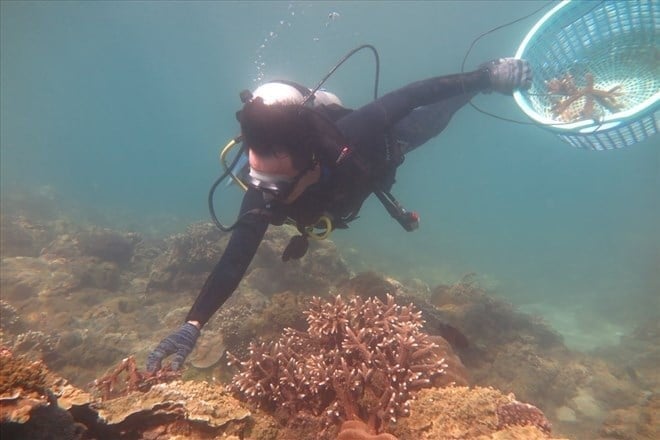
A coral reef restoration nursery located in Nha Trang waters, Khanh Hoa. Photo: Lao Dong Newspaper.
One of the emerging issues today is carbon from the sea, also known as blue carbon, which holds tremendous value. International studies indicate that, on average, the ocean can absorb approximately 400 million tons of CO2 annually, equivalent to the total greenhouse gas emissions of the United Kingdom.
The primary carbon sinks include mangrove forest ecosystems, seagrass beds, coral reef ecosystems, and phytoplankton. Notably, mangrove forests store much more carbon than terrestrial forests due to their distinctive root systems and tree structure. According to Dr. Luu The Anh, this represents a potential source of carbon credits because Vietnam's maritime area spans approximately 1 million km². However, methods for tapping into this potential still require substantial research and implementation.
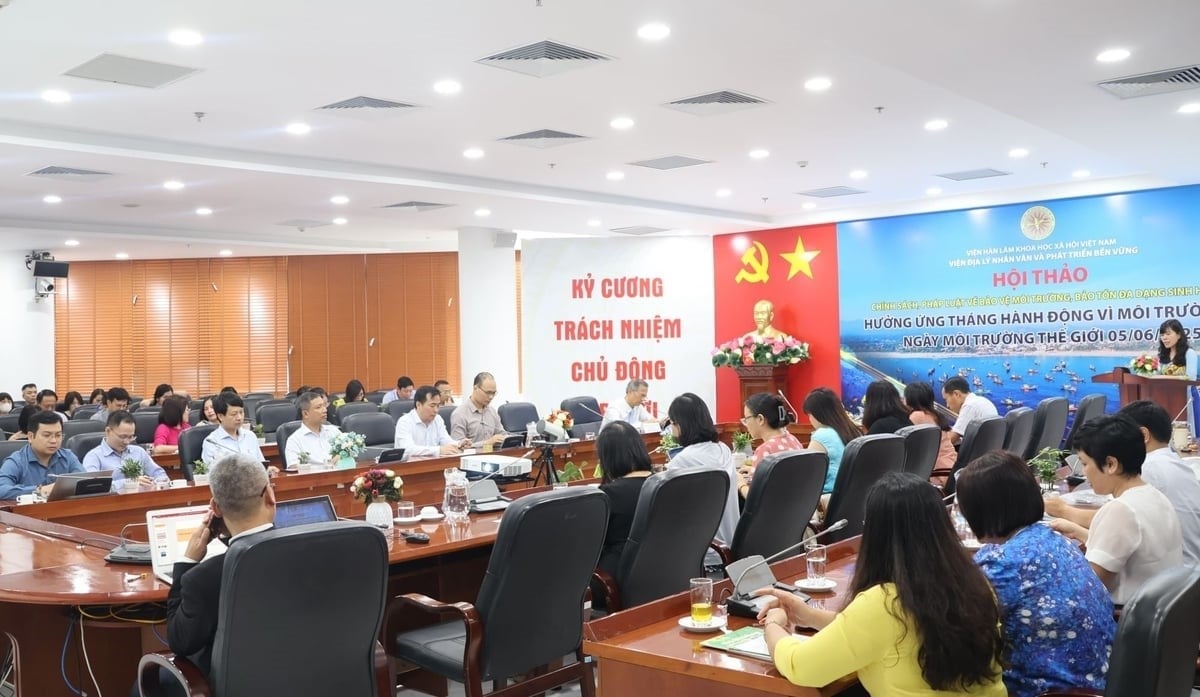
The event was held in response to World Environment Day (June 5) and the 2025 Action Month for the Environment. Photo: Trung Nguyen.
Sharing experiences from the Center for Marine Life Conservation and Community Development (MCD), M.S. Than Thi Hien, Deputy Director of the Center, stated that local communities should participate in managing and designing marine biodiversity conservation activities in their areas. In the marine areas of Binh Dinh, Khanh Hoa, and Quang Nam, co-management solutions for marine conservation have contributed to the recovery of aquatic resources after prolonged declines and the restoration of dozens of hectares of coral reefs and seagrass beds.
Building on such models, scaling up requires close collaboration among state agencies, organizations, and local communities to achieve high effectiveness, especially through co-management initiatives, marine protected areas, and aquatic resource protection zones. In the context of limited human and financial resources, it is essential to enhance the role and capacity of communities, promote corporate partnerships, and apply information technology. At the same time, there is a need to strengthen scientific research cooperation to expand databases for ecosystem assessment, evaluate carbon storage capacity, and restore ecosystems.
Translated by Thu Huyen

(VAN) Technology is redrawing the map of Vietnamese aquaculture: more modern, greener, and more sustainable.
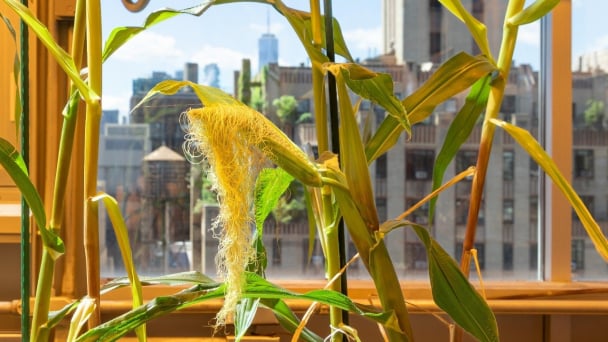
(VAN) Novel process harnesses machine learning to reveal groups of genes that determine how efficiently plants use nitrogen.

(VAN) Several scientists and farmers are experimenting with soil treatment in some key durian-growing regions such as Cai Lay (Tien Giang), Dak Song, Gia Nghia, and Dak R’lap (Dak Nong).
/2025/05/25/4127-3-073637_820.jpg)
(VAN) Thanks to the promotion from an FAO-implemented project, vegetable production in greenhouses in Moc Chau has seen strong development, from 1.5 hectares in 2021 to nearly 50 hectares in 2024.

(VAN) FAO has recently supported USD 140,000 to implement the project 'Risk mitigation human-animal interface risks through disease control initiatives in pig farming.'

(VAN) The People's Committee of Tra Vinh province has approved an adjustment to the investment policy for the Green Hydrogen Plant project, increasing its area to approximately 52.76 hectares.